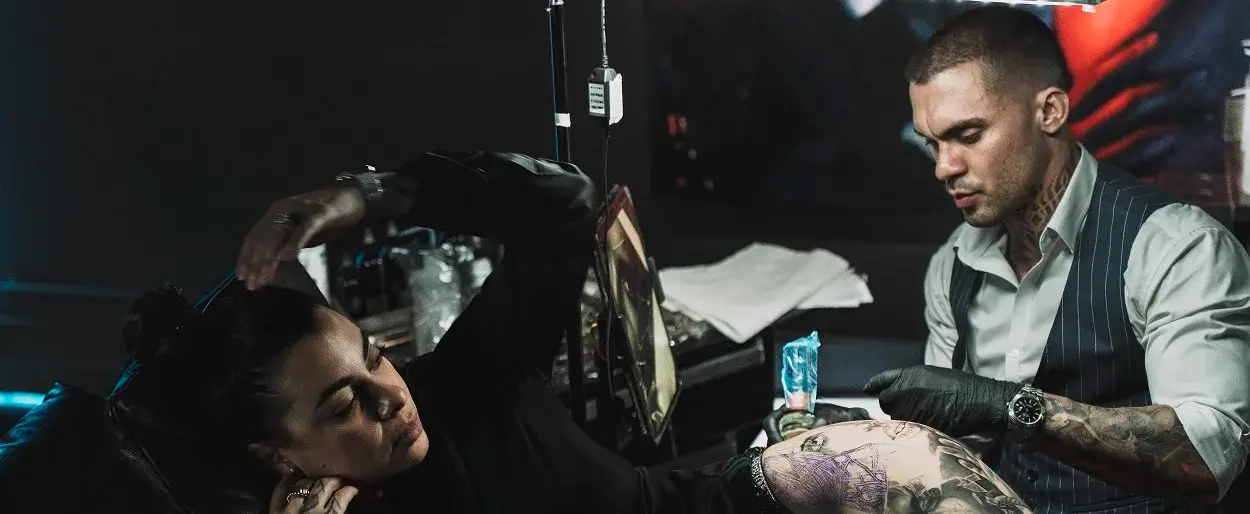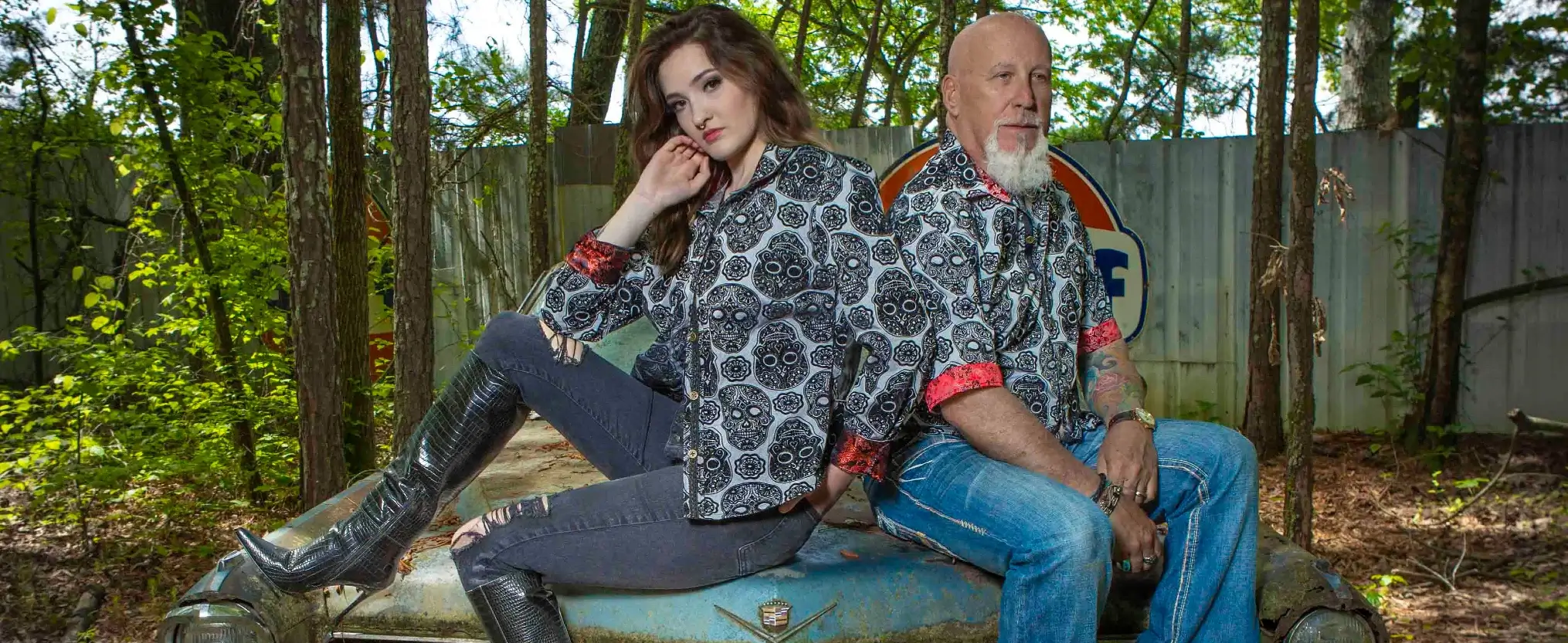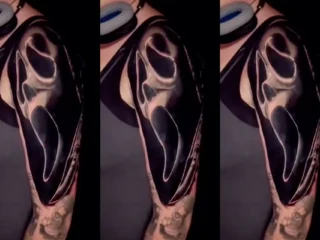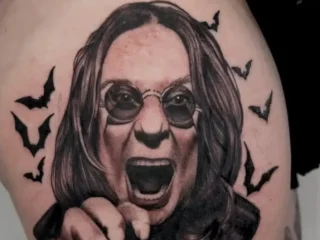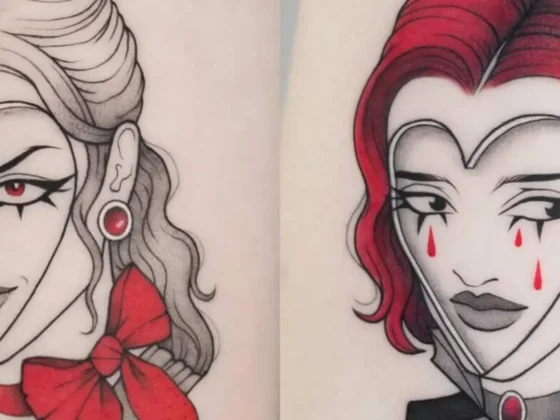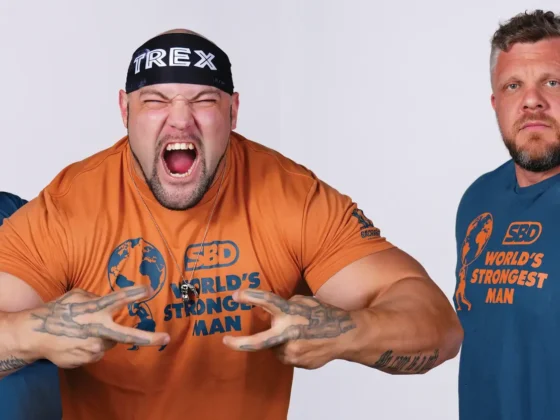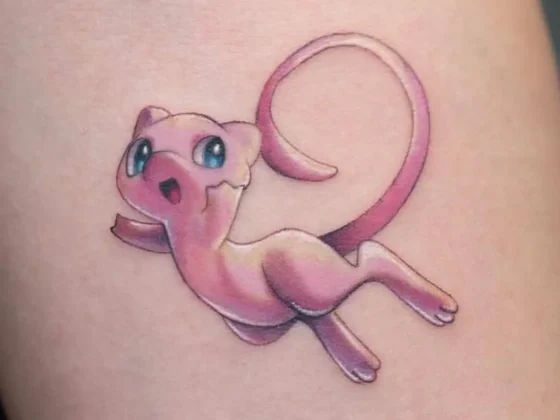Inked Mag Staff
April 10th, 2016
Glenn Hetrick – The Man Behind the Monsters
Glenn Hetrick has devoted his life to making your wildest nightmares come to life. Have you ever imagined the horror of watching a loved one’s guts ripped open by a…
Glenn Hetrick has devoted his life to making your wildest nightmares come to life. Have you ever imagined the horror of watching a loved one’s guts ripped open by a voracious zombie? Hetrick is the guy you turn to if you want to bring that nightmare to life. Have you ever needed an eight foot tall demon complete with horns, tentacles and blood oozing out of their skin to show up in your movie? Hetrick is the man that can summon that demon to Earth. Hetrick is a makeup effects artist, or, to put it in a better way, he’s the man behind the monsters.
You may not know Hetrick’s name but you most certainly know his creations from The Hunger Games, Agents of S.H.I.E.L.D., and Heroes among many other TV shows and films. We guarantee that on at least one occasion Hetrick’s work has made you lose some sleep at night.
For ten seasons Hetrick has served as one of the judges on Syfy’s Face Off, a reality show that pits would-be makeup effect artists against each other. The show has not only pulled back the curtain on how effects are created for film and TV, but it has also shown the insane passion that fuels these projects. For Hetrick, that drive could be seen from as early as when he was six-years-old.
“When I was a kid I remember being given this clay to play with during art period,” Hetrick says. “My grandmother had bought me a book that was a novelization of one of the Planet of the Apes movies and I was really into the ape makeup. So I drew out the ape face on a piece of paper and sculpted the clay in order to make a relief plot of an ape face.”
This would be the first of hundreds of creations that Hetrick would sculpt as he was growing up. Every year he would make the journey from his hometown outside of Bethlehem, Penn., to Jersey to attend a horror convention were he could pick up the latest garage kits. He would return home with everything he needed to recreate the monsters of his day—Alien, Predator, Pinhead from Hellraiser and more. From here he would dive head first into the theater programs in junior high and high school, where he would act on stage and prepare the makeup for his character and others off stage.

It’s fair to say that Hetrick had caught the show business bug and he was chomping at the bit to get out to California, but that trip would be delayed by four years. “In college, an interesting thing happened where my folks, being very practical people, made me go,” Hetrick jokes. On his way to a Public Relations and Promotions degree, Hetrick took nothing but theater and television production classes for all of his electives. So he pulled off one heck of a trick—he obtained the sensible degree his parents wanted while getting the foundation that he would need to hit the ground running out in California.
Hetrick entered the industry in a very interesting time. With the invention of CG studios were able to create effects in post-production, thus saving the hours upon hours of work (and thousands of dollars) it would take to create the make up effects on site. The amount of time productions spent shooting also shortened considerably, meaning there was no longer time to handcraft the effects in the old way. On top of all this was the invention of HD, which demanded that the effects look more realistic than they ever had. All of this forced Hetrick and his team to adapt and embrace new technology or they would quickly become obsolete.
“The main thing is that you need to see it as an opportunity to learn the new standard,” Hetrick says. “With the emergence of HD you can’t use old foam pieces with grease makeup the way you used to. We had to move on to silicone, and silicone is way harder to work with, but it holds. It is very important for my success that I embraced this new technology as it was created.”
The two main things that Hetrick and his studio, now known as Alchemy Studios, had to do in order to adapt was to embrace 3D printing and restructure the way the studio worked. Hetrick partnered with one of his fellow judges from Face Off, Neville Page, to take care of the first issue. “Neville can do anything with a computer, he knows 3D text and more importantly 3D printing,” Hetrick says. “So we are now doing things where we are directly integrating a 3D digital design, printing it out, painting it and putting it right on the performer. It is absolutely unbelievable, I mean, it is flawless.”

In the old days, every person working in the studio would have a very specific specialty. Now every person in the studio is trained in nearly every task that needs to be fulfilled. This allows a great amount of flexibility for the studio to adapt to the truncated schedules used by most productions. Hetrick absolutely loves the byproduct of these changes.
“[The changes are] awesome because it allows us to be more prolific,” Hetrick explains. “We are going to be able to create so much more work in our lifetime than we ever would have been able to starting every single piece from scratch and molding it with clay. Professionally and personally it allows us to explore so much more.”
As someone who has spent thousands of hours of his life perfecting the look of characters on your TV screen, one should not be surprised that Hetrick has spent the same amount of attention to detail as he planned out his tattoos. For the last 20 years he has been working to complete his bodysuit. While many people will see where their tattoos take them and make choices as they go along, Hetrick has had a vision of the final product since the day he got his very first piece.
First and foremost, Hetrick does not have even a single solitary dot of color in his tattoos. It’s Black and Grey all the way. The subject matter of his ink is all closely related to his studies of the occult.
“Each [tattoo] is so incredibly significant to me, its sort of like spiritual armor,” Hetrick says. “I have this massive amount of ancient symbols and seals that come from these ancient occult books like the Key of Solomon.”

Hetrick’s “spiritual armor” truly is very similar to the suits of armor worn by knights of so many years ago. Hetrick and his tattoo artists—his entire suit has been inked by Adam Kilss and Amy Nicoletto—have been working as modern day armourers while trying to make his bodysuit come together. “[The key] was taking the magical symbols and their meanings and finding a way to weave them together in such a way that aesthetically they look beautiful, but they also work in terms of their deeper symbolic meanings.” This means that in addition to having well over 250 hours of tattooing on his body, Hetrick and Kilss (who has done the bulk of the work) have spent almost as much time planning and laying out where the ink would go.
Another parallel between the bodysuit and armor can be seen not in where the ink is, but in where it is not. If there weren’t strategically placed spaces left unprotected a knight wouldn’t be able to move, the same principal applies to Hetrick’s tattoos. “There is a lot of negative space in my tattoos,” Hetrick explains. “I don’t want to be covered head to toe. As an artist you have to consider the negative space to be as important as what is drawn on there. When you look at me from afar you can see a lot of coverage, but the whole thing looks like art itself, instead of a bunch of pieces of art that have been slapped onto the same canvas willy nilly.”
And in the same way that the chest plate anchors a suit of armor, it is Hetrick’s enormous chest piece that ties the whole suit together. “My favorite tattoo is one that most people don’t see since I have to have my shirt off, it’s a giant memento mori.” The memento mori is a symbol that has been used by many cultures to illustrate how fleeting life can be. Traditionally a memento mori will be made up of a bird (representing the flight of time), a skull (death) and an hourglass (representing time).
“All through history it’s just a reminder that you are going to die,” Hetrick explains. “And that time is really the only true currency we have.”
In designing his tattoo Hetrick chose an ibis, the bird closely associated with the Egyptian god of knowledge, Thoth over the traditional eagle. Instead of the traditional hourglasses Hetrick chose two clocks, one of which carries an interesting legally binding contract with it.

“On each of my pecs I have a clock,” Hetrick says. “The one on the right hand side is stopped at the moment of birth, there are no hands on the clock on my left. I have it written up in my will that Adam will put the hands on when I die, at least if there is enough of a carcass left to tattoo.”
You have to be insanely dedicated to collecting tattoos in order to sign up for some postmortem ink. It is in his role as both a tattoo connoisseur and a makeup effects artist that Hetrick gets irate about one thing in particular—seeing tattoos that look fake on TV. Over the years he has made thousands of fake tattoos for productions and has perfected a way to make sure that the faux ink looks as real as possible.
“When the colors are too true and opaque it really just feels like writing on top of the skin, not a tattoo,” Hetrick explains. “We have to make sure that it looks like the tattoos are in their skin instead of on the skin. The very thing that lends voracity to a design is that over-the-top commitment to erring and weathering things that goes beyond what you see consciously. You just read it as being a tattoo.”
Tattoos would be part of the most challenging, and thus far most rewarding, makeup effect of Hetrick’s career—Tigris from The Hunger Games: Mockingjay Part 2. In a world with a ton of heavily modified characters, Tigris stands out above the rest, she has tiger stripes covering the entirety of her body.
“Tigris is a combination of everything we learned working on all of those movies,” Hetrick says. “We had done literally thousands of hours or trauma makeup—burns, scars, cuts, tattoos, etc. Tigris is the high point, the crescendo that was the makeup for The Hunger Games.”
Of course, the most difficult thing about Tigris is finding a way to make her stripes look real. Hetrick and his team accomplished this by carving out portions of the clay where the tattoos would go, thus giving it a look similar to tribal scarring. Every day they would have to print out the tattoos and place them back into the scars carved out of the clay, an act of devotion that shows his team really went the extra mile to create the look. When Tigris was complete Hetrick would receive one of the greatest compliments of his career.

“The producer, Nina (Jacobson), who had the book rights and had been with it every second of the day was on set,” Hetrick says. “Her and her mom were so excited when they saw Tigris that she hugged me. That’s probably the single most rewarding response from a producer that I’ve ever gotten.”
And while Tigris is Hetrick’s favorite work as of press time it won’t be for much longer, the artist always loves his most recent work the most. This is in part because each effect is built off of the things he has learned on previous jobs, in a way that makes it similar to his tattoo suit of spiritual armor. As impressive as each individual tattoo is, each would be completely out of place if it weren’t for the work before it.
“I’m so happy with all of them,” Hetrick says of his tattoos. “The only thing that I regret about my tattoos is not pulling them all together as a cohesive idea sooner so that I could have them for longer. I’m pissed off that at 43 I’m just getting near complete with some of the ideas, I wish I had this done in my twenties so that I had enough time to fully enjoy all of them.”
Hetrick is a very, very busy man. In addition to returning as a judge for this season of Face Off he is still going to be running one of the most innovative (and busy) effects studios on Earth. It’s going to be tough for him to find the time to finish up the body suit he has been working on for the past 20 years, but we’re sure Hetrick and Kilss will find some time to add to it. Sometimes it must seem like too much to accomplish in a lifetime. Luckily for Hetrick he’ll have to wait until he’s dead to consider his suit complete.

Editor's Picks
Bridging Classical Art and Modern Tattooing
Esteban Rodriguez brings the discipline of classical fine art to the living canvas of skin, creating hyper-realistic tattoos that merge technical mastery with emotional depth.
Show Your Ink Fashions Brings Custom Style to Tattoo Culture
Show Your Ink Fashions creates custom shirts designed to showcase your tattoos as wearable art, blending fashion with personal expression.
The Ultimate “Superman” Tattoo Roundup: Just in Time for Superman’s Return to Screens
With Superman’s big return to theaters, fans are revisiting some of the most iconic ink inspired by the Man of Steel.


